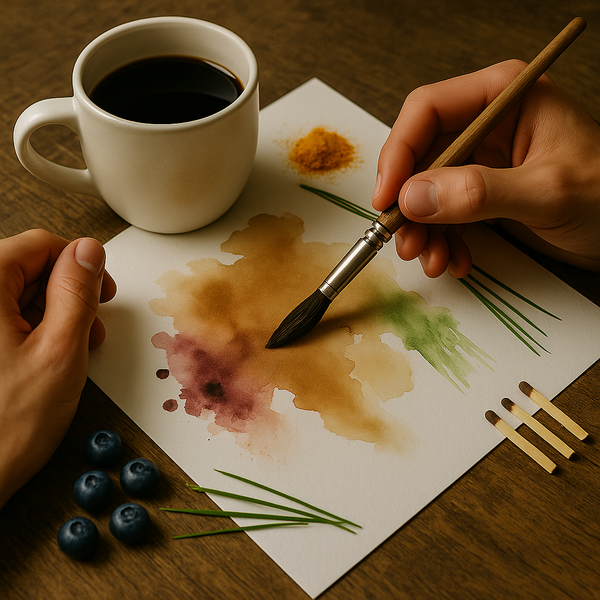Art is a universal language that transcends cultural and linguistic barriers.
At its core, art is built upon seven fundamental elements that serve as the building blocks for creating visually compelling and meaningful works.
These elements are line, shape, form, space, color, value, and texture.
Understanding these fundamentals is essential for anyone looking to deepen their art education and improve their artistic skills.
Ready to unlock the secrets of art? Let's dive in!
Key Takeaways:
- The seven elements of art are the building blocks that artists use to create visual interest and communicate ideas.
- Understanding these elements can enhance your art education and improve your ability to analyze and appreciate artwork.
- Each element plays a crucial role in creating a cohesive and compelling piece of art.
Line: The Foundation of Art
Lines are the most basic element of art, serving as the foundation for all other elements.
They can be straight lines, curved lines, solid lines, or even marks moving across a surface.
Lines can create shapes, define contours, and add depth to a composition.
For example, contour lines are used to outline the edges of objects, giving them a three-dimensional effect on a two-dimensional surface.
Lines can also convey emotions and create feelings.
Sharp angles and straight lines can evoke a sense of rigidity and structure, while curved lines can create a sense of fluidity and movement.
By mastering the use of lines, artists can guide the viewer's eye and create a focal point in their artwork.
Shape: Defining Objects
Shapes are two-dimensional areas defined by lines or contrasts in color or value.
They can be geometric shapes like squares and circles or organic shapes that are more freeform and irregular.
Shapes are essential for creating recognizable objects and forms in a composition.
Positive space refers to the shapes of objects themselves, while negative space is the area around and between those objects.
Understanding the interplay between positive and negative space can add depth and balance to a composition.
For instance, a well-balanced use of negative space can make a crowded composition feel more open and harmonious.
Form: Adding Dimension
Form refers to the three-dimensionality of an object, giving it volume and depth.
While shapes are flat and two-dimensional, forms are three-dimensional and can be viewed from multiple angles.
Forms can be created through the use of light and shadow, giving the illusion of depth on a flat surface.
Artists often use different types of forms to create a sense of realism in their work.
For example, a sphere, cube, or cylinder can be used to represent various objects in the physical world.
By understanding how to manipulate forms, artists can create more lifelike and engaging compositions.
Space: Creating Depth
Space is the element that refers to the area within, around, and between objects in a composition.
It can be divided into positive space (the area occupied by objects) and negative space (the empty areas around and between objects).
The effective use of space can create a sense of depth and perspective in a composition.
Artists can use techniques like overlapping, size variation, and placement to create the illusion of depth on a two-dimensional surface.
For example, objects that are closer to the viewer are often larger and placed lower in the composition, while objects that are farther away are smaller and placed higher.
This creates a sense of three-dimensionality and guides the viewer's eye through the artwork.
Color: The Emotional Element
Color is one of the most powerful elements of art, capable of evoking emotions and setting the mood of a composition.
The color wheel is a tool that artists use to understand the relationships between different colors.
Primary colors (red, blue, yellow) can be mixed to create secondary colors (green, orange, purple) and tertiary colors.
Color theory explores how colors interact with each other and how they can be used to create harmony or contrast in a composition.
For example, complementary colors (colors opposite each other on the color wheel) can create high contrast and draw the viewer's attention.
Understanding color theory is essential for creating visually appealing and emotionally impactful artwork.
Value: The Lightness and Darkness
Value refers to the perceivable lightness or darkness of a color.
It is an essential element for creating depth, contrast, and emphasis in a composition.
The value scale ranges from the lightest light (white) to the darkest dark (black), with various grey variants in between.
Artists use value changes to create the illusion of light and shadow, adding depth and dimension to their work.
For example, a dark value can be used to create shadows and add depth, while a light value can highlight areas and create a sense of volume.
By mastering the use of value, artists can create more dynamic and visually interesting compositions.
Texture: The Surface Quality
Texture refers to the surface quality of an object, whether it is smooth, rough, soft, or hard.
Texture can be actual (tactile) or implied (visual).
Actual texture is the physical quality of a surface that can be felt, while implied texture is created through the use of lines, shading, and color to give the illusion of texture.
Artists use different textures to add depth and visual interest to their work.
For example, a painting might use thick, textured brushstrokes to create a sense of roughness, while a drawing might use fine, detailed lines to create a sense of smoothness.
By understanding and manipulating texture, artists can create more engaging and dynamic compositions.
The Importance of the Fundamentals
Understanding the seven elements of art is crucial for any artist looking to improve their skills and create more compelling work.
These elements serve as the building blocks for all visual art, providing a foundation upon which artists can build their compositions.
By mastering these fundamentals, artists can create more balanced, dynamic, and visually interesting works.
Whether you are a beginner or an experienced artist, a solid understanding of these elements will enhance your ability to analyze and appreciate art, as well as improve your own artistic practice.
Practical Applications
The seven elements of art are not just theoretical concepts; they have practical applications in various forms of art, including painting, drawing, sculpture, and digital art.
For example, understanding how to use lines and shapes can help an artist create more accurate and lifelike drawings.
Similarly, a solid grasp of color theory can enhance a painter's ability to create harmonious and emotionally impactful compositions.
In sculpture, the understanding of form and space is essential for creating three-dimensional works that are both balanced and dynamic.
Digital artists can also benefit from understanding these fundamentals, as they provide a foundation for creating visually compelling and technically proficient work.
Enhancing Your Art Education
For those looking to deepen their art education, studying the seven elements of art is an essential step.
By understanding these fundamentals, you can improve your ability to analyze and appreciate artwork, as well as enhance your own artistic practice.
There are many resources available for those looking to learn more about the elements of art, including books, online courses, and workshops.
By investing time and effort into studying these elements, you can develop a stronger foundation for your artistic practice and create more compelling and visually interesting works.
Unlock Your Artistic Potential with the Fundamentals
Mastering the seven fundamentals of art—line, shape, form, space, color, value, and texture—opens the door to endless creative possibilities.
These building blocks are essential for crafting visually compelling and meaningful works that captivate and inspire.
By understanding and applying these elements, you can elevate your artistic skills, create more balanced and dynamic compositions, and truly unlock your artistic potential.
So, dive into these fundamentals and watch your creativity soar!
Art Fundamentals FAQs
Welcome to the FAQs, where we unravel the essential building blocks of artistic creation!
Whether you're a budding artist or a seasoned pro, understanding the core elements of art can significantly elevate your work.
Dive into these frequently asked questions to gain insights that will help you create more balanced, dynamic, and visually compelling pieces.
Let's get started!
What are the seven elements of art?
The seven elements of art are line, shape, form, space, color, value, and texture. These elements serve as the building blocks for creating visually compelling and meaningful works of art.
How can understanding the elements of art improve my artwork?
Understanding the elements of art can enhance your ability to analyze and appreciate artwork, as well as improve your own artistic practice. By mastering these fundamentals, you can create more balanced, dynamic, and visually interesting compositions.
Are the elements of art applicable to all forms of art?
Yes, the elements of art are applicable to various forms of art, including painting, drawing, sculpture, and digital art. They provide a foundation for creating visually compelling and technically proficient work in any medium.
Eager to learn more about the fundamentals? Check out Forrest Imel's video!
Want even more content about creativity and art?
Be sure to check out all of our creative chronicles!
Eager to explore art, creativity, and critiquing?
Check out some of our other articles:
-Giving and receiving feedback







